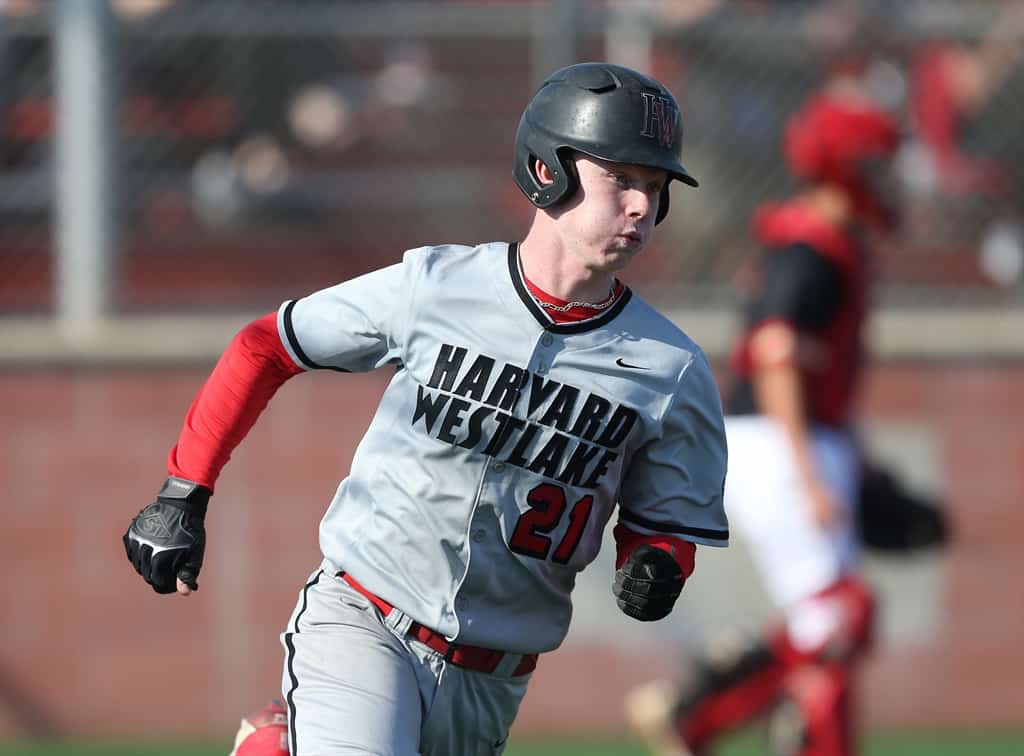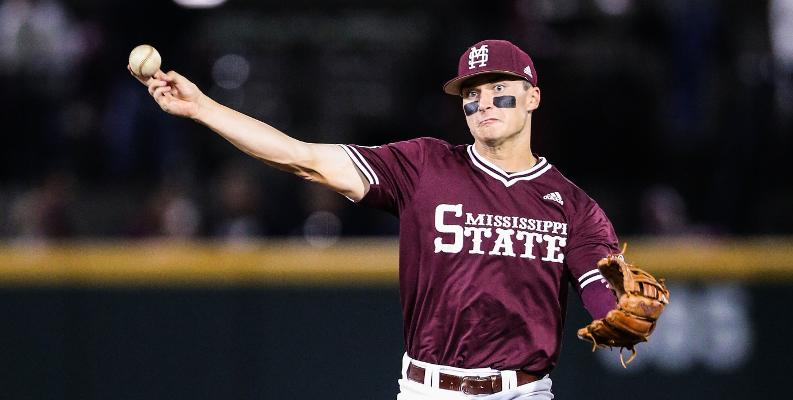With the June 10-11 MLB Amateur Draft set to take place in just a few weeks, each day seems to bring new heat, rumors and possibilities when it comes to who the Mets draft into the organization. While the Mets own six picks in this year’s abridged draft format, most of the public discussion has centered around which ballplayer will get the call when the Mets first take the clock with the 19th overall selection.
Various amateur baseball analysts have put out mock drafts, and each one seems to point to a new name for the Mets’ first pick. This is not surprising, as real intelligence regarding who teams are looking at is more scare and safely guarded than prior years. Mock drafts are drawing on some amount of hearsay, but also lots of educated guessing. Lets take a look at each of the names who have been linked to the Mets’ spot, as well as a few other names that could make sense in that middle part of the 1st round.
College Arms
The 2020 draft class is known for being rich in talent in general, but in no demographic is that more evident than the bevy of collegiate pitchers that are ready to go pro. Perhaps in part because Division I college programs have recently jumped ahead of MLB teams’ capabilities when it comes to cutting-edge pitching development, and young ballplayers have taken notice and chosen to go to campus, there are a more than a few arms the Mets will be looking at from this group. In fact, the University of Miami alone has two similar, right-handed arms to start us off.
Slade Cecconi and Chris McMahon both boast the size and strong frames scouts traditionally like to see (Cecconi is 6’4, 220 lbs., McMahon is 6’2, 205 lbs.). Each pitcher has eclipsed the mid 90’s with their fastball. The consensus seems to be for Cecconi to be drafted first, as Fangraphs reports there was early spring buzz of him hitting the upper 90’s. McMahon, who has has been throwing his mid-90’s heat since his prep days in the Philadelphia suburbs, has reportedly recently improved his slider, to go along with strong grades in pitchability and repertoire depth. Either Cecconi or McMahon project to be picked right around where the Mets select in the first round.
While the Louisville Cardinals’ Reid Detmers and his GIF-inspiring curveball likely don’t stay on the board long enough to be in play at 19, his rotation-mate Bobby Miller is seen by some to have mid-to-late first round potential. According to Fangraphs, the big-framed 6’5″, 220 lb. right-hander holds his mid-to-upper 90s velocity deep into games and uses a plus slider as his bat-missing breaking pitch. The caveat here might be a long arm action that scares some teams as a marker of heightened injury risk.
The number of other college arms with mid-first round helium that all throw in the mid 90s with a plus breaking pitch are almost too many to list. There’s Garrett Crochet, the 6’5″, lanky Tennessee left-hander who profiles two potential 70-grade pitches in his high 90s, tailing fastball and his high-spin slider. Concerns about his ability to start derive from his frame, delivery and lack of a clear third pitch. Some teams might prefer him as a fast-moving high-leverage relief option.
Where Crochet may get dinged, Duke’s Bryce Jarvis has earned praise for his repertoire depth and pitchability. The less-projectable 6’2″, 195 lb. right-hander saw his velocity spike into the mid-90s for the first time this spring, a welcome complement to his potentially plus change up and slider, which he locates well. Throw in Georgia’s Cole Wilcox, whose hard, biting slider might be one of the best breaking pitches in the draft, Oklahoma’s Cade Cavalli, who has the body, velocity and hard slider that scouts dream on, and Florida State’s CJ Van Eyk, whose fastball popped upper 90s last fall with Trackman-friendly traits, and it’s really easy to see the Mets landing a college arm in this spot of the draft.
Prep Bats
In analyzing where the Mets amateur department has gone to in the first round in recent years, after drafting college arms in 2016 and 2017, you can’t ignore the trend towards high school bats the last two cycles, in drafting Jarred Kelenic and Brett Baty.
Coincidentally, this year’s crop of potential first rounders have a few prep bats that could make it to the 19th pick. While outfielder Austin Hendrick’s loud raw power and bat speed out of western Pennsylvania may not slide far enough, there remains an outside chance due to questions about his raw hit tool. If hit tool is your emphasis, Robert Hassell out of Tennessee boasts what some scouts say is the best hit tool among prep hitters in the draft. The left-handed swinging outfielder projects to hit for at least average game power.
Another left-handed outfielder who could really fit the Mets desire for up-the-middle athleticism is Pete Crow-Armstrong out of Harvard Westlake High School in California. Crow-Armstrong uses his plus speed to play a strong center field, receives solid hit tool grades, and has a good track record of performance against strong competition. While some question if there is significant power in Crow-Armstrong’s bat, he does project for at least sneaky, gap-type power. Another California prep bat, loosely linked to the Mets by MLB.com’s Jonathan Mayo, is for-now catcher, Tyler Soderstrom. While teams will be drafting Soderstrom for his bat, buoyed by a strong hit tool and solid power projection, most think his final position will be either third base or corner outfield.
Other Strong Possibilities
Fresh off the rumor mill, ESPN’s Kiley McDaniel linked a college bat to the Mets in his latest mock draft, in Mississippi State second baseman Justin Foscue. While McDaniel also hints the Mets are heavily linked to college players with their first pick, Foscue would potentially bring the kind of cost-contained, quick-to-the-majors player that GM Brodie Van Wagenen is often seen as seeking. McDaniel describes Foscue as a late riser up draft boards, as teams likely see value in his versatility, as he can play both second base and third base. The other big drawing card here is power, as the 6’0″, 200 lb. infielder packs some punch and projects for at least average offense.
Finally, the last name that seems to have at least some steam in relation to the Mets pick is Texas prep arm Jared Kelley. Would the Mets go back to Jared in the first round for the second time in three years? Well, if they do, they’ll be getting a strong 6’2″, 220 lb. workhorse-framed right-hander who can run his heater up to 98 mph. Kelley also comes armed with an easily-plus changeup that he sells well with his arm speed. The main question regarding Kelley, who has put his name in the mix with Nick Bitsko and Mick Abel as the top high school arms in the draft, is going to be whether he can learn how to spin a usable breaking pitch. Without this, he has a realistic floor of high-leverage reliever with his current stuff. Armed with a competent third pitch, Kelley is said to have mid-rotation upside.
While the Mets amateur department spends these next weeks leading up to the draft pouring over and debating the live-looks and data they have on all of these talented players, Mets fans should feel confident in this group’s underappreciated track record of consistently acquiring and developing quality major league talent, year after year, through the draft. It will be an exciting time as the Mets are put on the clock, and decide which of these names they will offer the chance to don the blue and orange.



